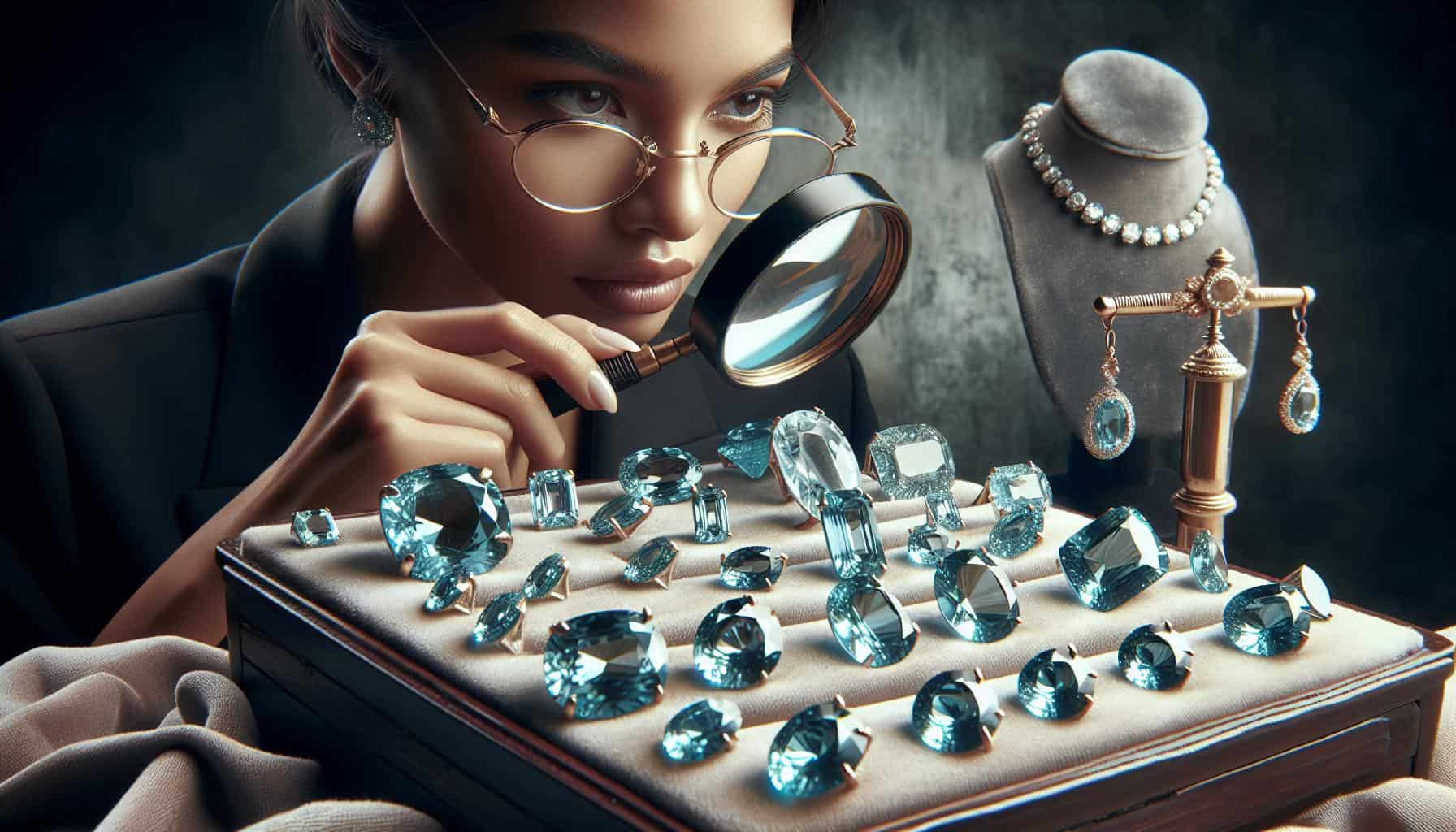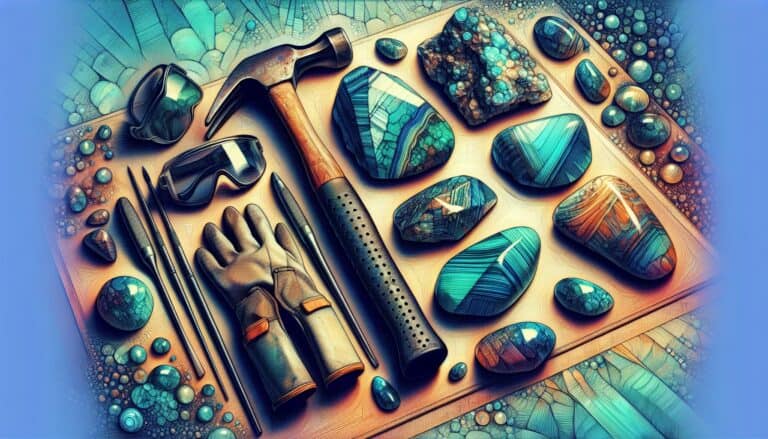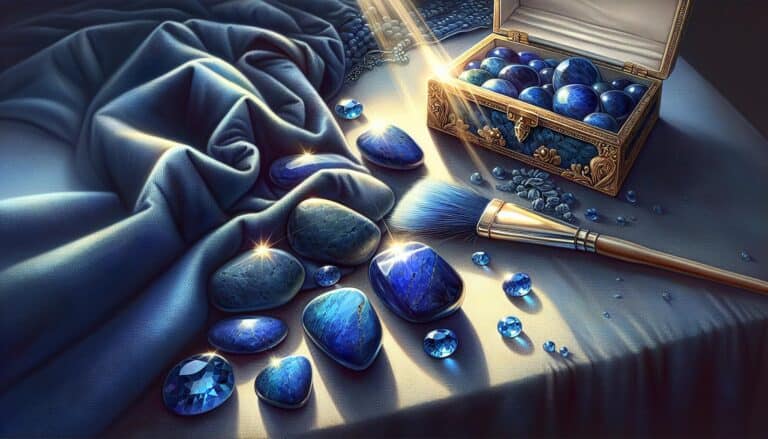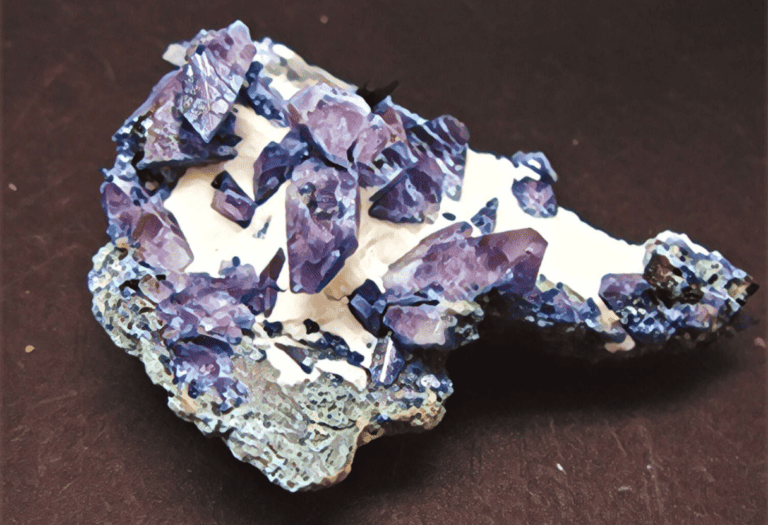Diving into the world of gemstones, you’ve likely been captivated by the serene beauty of aquamarine.
Its oceanic hues range from the lightest blue to deep sea-green, making it a favorite for jewelry enthusiasts. But have you ever wondered about its value?
Understanding aquamarine’s worth isn’t just about the price tag; it’s a blend of factors including color, clarity, cut, and carat weight. Whether you’re a collector or simply love the gem’s calming presence, knowing its worth is essential.
Let’s explore what sets the price for this treasured stone and how market trends influence its value.
With aquamarine’s allure and rarity, you’re stepping into a fascinating aspect of the gem world that’s as deep as the sea itself.
Aquamarine value depends on color, clarity, cut, and carat weight. The most valuable aquamarines are deep blue with high clarity and expert cuts. Large, untreated stones are rare and command higher prices. Market demand and source origin, particularly Brazilian Santa Maria aquamarines, also influence value.
What Is Aquamarine?
Aquamarine, a gemstone beloved for its serene blue hue, is part of the beryl family. Its name, derived from Latin, means “water of the sea,” aptly reflecting its oceanic tones ranging from light blue to deep blue-green. This gemstone’s color comes from trace amounts of iron within its crystal structure.
As you explore the world of gemstones, you’ll find that aquamarine has a rich history. Ancient mariners revered aquamarine for its supposed protective powers, believed to calm waves and keep sailors safe. In various cultures, it was also seen as a symbol of youth, health, and hope.
This gem is not merely a pretty face; it also ranks a solid 7.5 to 8 on the Mohs hardness scale, ensuring its durability in various forms of jewelry. Its transparency and luster make it a favorite among jewelers and a perfect match for elegant, everyday wear.
- Light blue specimens might communicate a subtle charm
- Deeper blue stones often fetch higher prices due to their rarity and intense vibrancy
Beyond color and resilience, aquamarine’s allure is in its versatility. Whether set in gold or silver, surrounded by diamonds or standing alone, this gemstone adapts to every style and occasion.
Given its enchanting qualities, aquamarine has secured a spot among the most popular gemstones. Its market appeal extends to both gem collectors and those seeking an emblem of tranquility. More than just an object of visual appeal, aquamarine offers a connection to ancient legacies and natural beauty, making it a timeless addition to any collection.
Keep in mind that seasonal demands and designer trends also play a role in aquamarine’s valuation. With its rising popularity in contemporary jewelry designs, demand for this gemstone continues to grow, influencing its worth in today’s gem market.
Aquamarine Prices: Factors That Affect Value

The worth of aquamarine can vary greatly, and several factors play a crucial role in determining its value. Understanding these factors gives you insight into what you might expect to pay or earn from these entrancing gemstones.
Color, Clarity, and Cut Quality
Aquamarine is famous for its stunning blue hues, ranging from the lightest sky blue to the deeper sea blue. Darker shades and blue-green colors tend to be more valuable, especially if they display high levels of saturation and brightness. The stone’s color impact its worth significantly; those with a rich, vibrant blue are typically at the pinnacle of value.
When it comes to clarity, aquamarines are expected to be eye-clean, meaning no inclusions are visible to the naked eye. Unlike diamonds, aquamarines are generally more included, but stones with fewer visible inclusions command higher prices.
The cut of an aquamarine is pivotal in exhibiting its luster and color; a well-cut stone will reflect light evenly across its surface and enhance its inherent beauty. A masterfully cut aquamarine will be worth more than one with a sub-par cut that fails to highlight the gemstone’s best features.
Market Demand and Availability
Aquamarine’s market value is also influenced by demand and availability. Certain times of the year might spike its popularity, such as spring, its seasonality aligning with the freshness and calmness the gem epitomizes.
The table below shows the relative influence of demand and availability on aquamarine prices:
| Factor | Influence on Prices |
|---|---|
| High Demand | Increases price significantly |
| Low Availability | Raises price due to scarcity |
| Designer Popularity | Skyrockets price based on trendiness |
Also, keep in mind that the acquisition of aquamarines is subject to mining conditions. Countries like Brazil and Madagascar, some of the primary suppliers of aquamarine, may experience varying yields from year to year. This fluctuation can mean that sometimes the gemstone’s price will rise simply because there are fewer stones on the market.
Remember, with gemstones like aquamarine, rarity often equates to value. Larger, high-quality specimens are exceedingly rare and, therefore, can demand a premium price. Similarly, aquamarines without treatments, such as heat to enhance their color, are rarer and appreciate in value over those that have been treated.
Knowing the intricacies of aquamarine valuation equips you with the knowledge needed to navigate purchases or sales. Whether you’re drawn to aquamarine for its calming presence or its tantalizing color, what’s most important is understanding how these factors weave together to define its worth.
Understanding Aquamarine: A Rare Gem
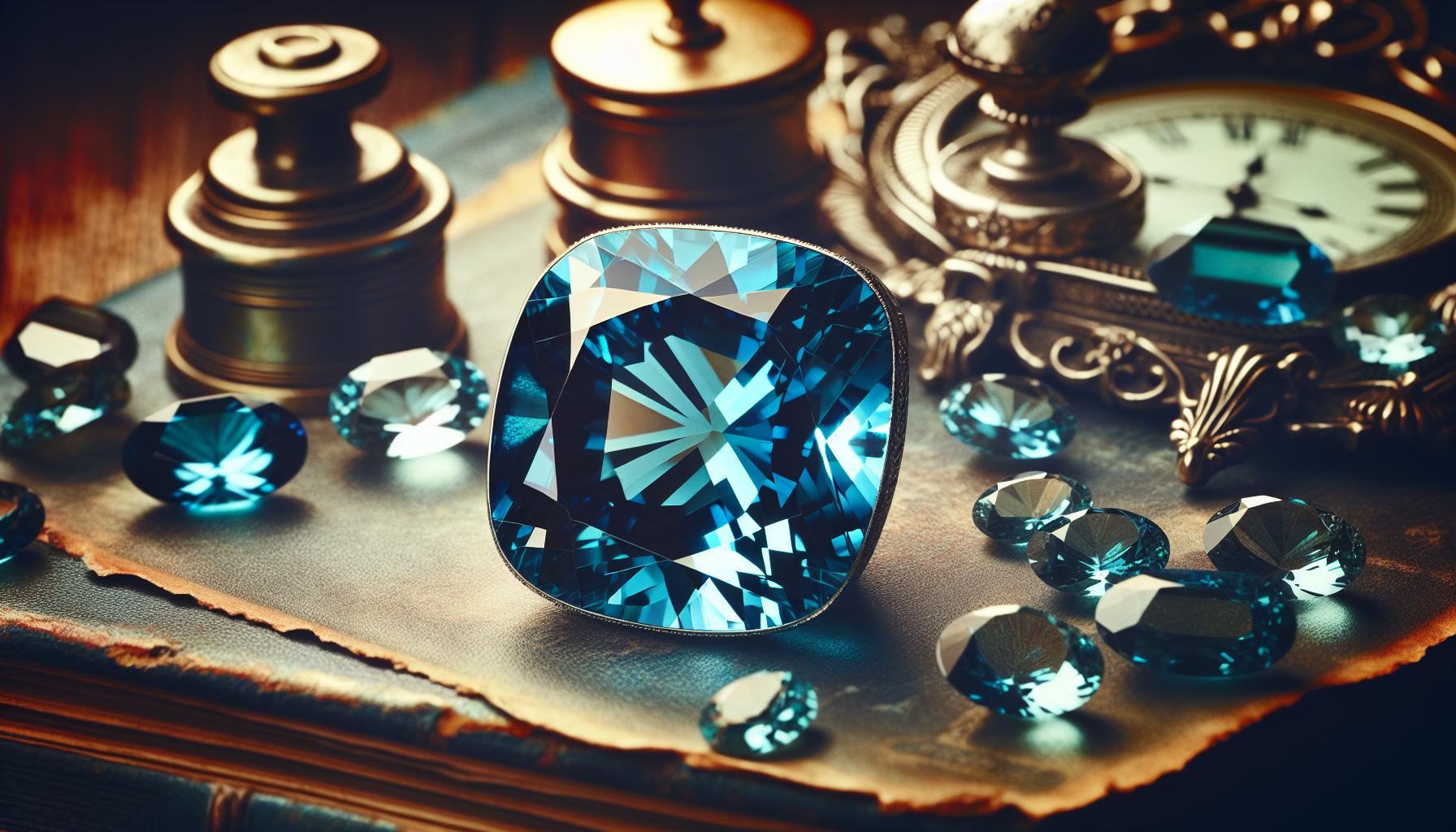
Aquamarine, with its captivating shades of blue and sea-green, is a gemstone that conjures images of oceanic tranquility. Its name, derived from Latin, means ‘water of the sea’, which is quite fitting given its serene hues. But just how rare is aquamarine, and what should you know about its origins and characteristics?
The Rarity of Aquamarine
When you’re considering the rarity of aquamarine, remember that it is part of the beryl family, which includes other precious stones like emeralds. However, high-quality aquamarines are considerably rarer than their beryl cousins. The deep, intense blue aquamarines, known as Santa Maria aquamarines from Brazil, are particularly sought after and less commonly found.
Aquamarine quality and value often correlate with color intensity and size. The gem can be found in large crystals, but finding these with the perfect clarity and depth of color is indeed a rarity. Larger stones, especially those over 10 carats with exceptional transparency and rich color, command higher prices and can be quite scarce.
Important factors affecting aquamarine rarity:
- Deep, intense blue color
- High clarity
- Large size (especially over 10 carats)
Origins and Characteristics
Aquamarine is mined in various parts of the world, adding to its intrigue and value. The most notable sources include Brazil, Nigeria, Madagascar, Zambia, and Mozambique. Each location produces aquamarines with distinct characteristics that appeal to different tastes and markets.
Brazilian aquamarines are renowned for their size and stunning blue colors, often setting the benchmark for quality. The stones from African mines, while smaller, are no less beautiful and are prized for their brilliant sparkle and clarity.
When assessing aquamarine, consider these factors:
- Color: The most prized are the deep blues, though lighter shades can also be quite beautiful.
- Clarity: Inclusions are less common in aquamarine than in other beryl gems, making high clarity stones more valuable.
- Cut: A quality cut will enhance the stone’s natural beauty and color, increasing its overall appeal and market value.
Understanding the origins and characteristics of aquamarine deepens your appreciation of this gemstone’s uniqueness. Whether you’re an avid collector or someone interested in purchasing aquamarine jewelry, knowing where these gemstones come from and what makes each one special helps in making an informed decision.
Aquamarine Grading and Valuation
The Grading System for Aquamarine
Grading aquamarine isn’t as standardized as diamonds, but there are established criteria determining their value. Color plays a pivotal role in aquamarine grading. Gemstones with a pure blue hue without green or gray tints are most coveted and fetch a higher price. The finest aquamarines exhibit a deep sky-blue color known as Santa Maria blue, with a high level of saturation that can drastically increase their worth.
Clarity is another crucial factor; aquamarines are expected to be eye-clean, meaning no inclusions are visible to the naked eye. In aquamarines, however, minute inclusions are often tolerated if they don’t affect the stone’s transparency or brilliance.
When it comes to cut, both the quality and the style impact value. An expertly cut aquamarine can enhance the stone’s color and luster, adding to its desirability. Poorly cut stones can appear dull and lifeless, negatively affecting their market value.
Lastly, carat weight also significantly influences aquamarine value. Larger stones can dramatically increase in per-carat price due to their rarity, especially if they maintain high color saturation and clarity.
- Deep blue coloration without green or gray tones increases value.
- Clarity ensuring eye-clean appearance is preferred.
- Expertly executed cut enhances the gem’s innate beauty and value.
- Increasing carat weight substantially raises per-carat price, particularly in larger, high-quality specimens.
Certification and Appraisal
Seeking professional certification for your aquamarine can provide clarity on the gemstone’s quality and authenticity. Renowned organizations like the Gemological Institute of America (GIA) provide certificates after thoroughly analyzing the gemstone based on the above-mentioned factors.
An appraisal typically follows certification for insurance or resale purposes. It’s a comprehensive evaluation by a qualified gemologist, determining the monetary value of the gemstone. Aquamarines with a high level of transparency, rich color, and without visible flaws are appraised at a higher value. The appraiser will consider current market trends and the rarity of the gemstone’s characteristics to provide a fair estimate.
Remember, not all aquamarines will have the same level of clear blue coloring or inclusion-free clarity. But don’t let that discourage you; each stone’s unique attributes contribute to its charm and individual story. To ensure you’re getting a fair assessment, always consult with a certified gemologist who can provide an accurate evaluation of your aquamarine’s worth.
Current Market Trends in Aquamarine Pricing
When you’re looking to buy or sell aquamarine gemstones, understanding the current market trends is crucial. The price of aquamarines fluctuates based on several factors including demand, availability, and current fashion trends.
High-Quality Specimens are always in demand, fetching top dollar in today’s market. Deep blue stones, often referred to as Santa Maria aquamarines, are particularly prized for their vibrant hue and command higher prices. In contrast, lighter shades of aquamarine, while still beautiful, may be more affordable.
Here’s a quick overview of factors influencing current pricing:
- Deep Blue Color: More valuable and sought after
- Clarity: Eye-clean stones with no visible inclusions are priced higher
- Cut and Carat Weight: Larger stones with expert cuts cost more
The rise of online shopping has also impacted aquamarine pricing. Convenience and the ability to compare prices across sellers can lead to more competitive pricing. However, you should tread cautiously as pictures may not accurately represent the stone’s true color and clarity.
Notable Trends in Aquamarine Sales
Recent years have seen a surge in the popularity of sustainable and ethical gemstones. Aquamarines sourced from mines operating with environmental responsibility and fair labor practices may carry a premium due to the increasing consumer concern for ethical production.
Another trend is the preference for custom and designer jewelry pieces that feature aquamarines. Unique settings and pairings with other gemstones can elevate the price substantially due to the craftsmanship and creativity involved.
Keep these trends in mind:
- Sustainable Sources: They can influence price and consumer interest
- Designer Jewelry: Custom pieces have added value
The economic landscape, including factors like currency fluctuations and tariffs, can also play a role in aquamarine pricing. Keeping abreast of economic news could help you predict potential shifts in gemstone markets.
Staying informed about these trends and understanding the nuanced aspects of aquamarine valuation will assist you in making savvy decisions whether you’re adding to your collection or crafting exquisite jewelry pieces.
The Most Expensive Aquamarine
When exploring the upper echelon of aquamarine pricing, you’ll find that the market reserves the highest figures for gems that boast exceptional quality and size. The most expensive aquamarines are those that exhibit a deep, translucent blue reminiscent of tropical oceans. Top-tier aquamarines can command prices that range into the tens of thousands of dollars, especially when they surpass the 10-carat mark.
The Santa Maria aquamarines, originating from Brazil, are known for their deeply saturated blue hues and can fetch premium prices. These stones set the benchmark for quality and value in the aquamarine world. Another notable type, the Santa Maria Africana, hails from Africa and closely resembles the Brazilian variety’s coveted color.
Why Do These Aqua Gems Command Such Hefty Prices?
- Rich deep blue color
- High clarity
- Larger sizes
- Rarity
For example, at an exquisite size of 25 carats, a high-quality Santa Maria aquamarine could easily be valued at over $20,000.
| Carat Range | Estimated Price Range |
|---|---|
| 1 – 5 | $500 – $1,500 |
| 5 – 10 | $1,500 – $10,000 |
| 10 – 15 | $10,000 – $15,000 |
| 15+ | $15,000 and up |
While these gems make up a small fraction of the aquamarine market, they represent a significant investment for gem collectors and can be the centerpiece of sophisticated jewelry. Knowing this, you’ll realize that pristine cut and clarity in combination with deep saturation greatly amplify an aquamarine’s value.
Retailers, especially high-end jewelers, may present these luxurious stones as part of exclusive collections, often in unique settings that highlight their beauty and justify their price. Custom designs featuring high-grade aquamarine can substantially increase the price due to the craftsmanship involved.
Moreover, the provenance of these gems can add an intangible value, as stones from legendary mines like Santa Maria have a storied history attracting connoisseurs who seek not just a gemstone, but a piece of earth’s history. Auction houses often see such pieces surpass expected valuations, driven by their allure among collectors and enthusiasts.
Buying Aquamarine: Tips and Recommendations
Where to Purchase High-Quality Aquamarine
When seeking to purchase high-quality aquamarine, you’ve got several options at your disposal. Reputable jewelers with established storefronts are a traditional yet reliable choice. These professionals can offer expert guidance and often provide a warranty for your purchase. For those looking for convenience and variety, online gemstone marketplaces have become increasingly popular. Websites specializing in gemstones can offer competitive pricing and a broad selection. However, it’s crucial to verify the seller’s credentials and review customer feedback before making an investment.
Visiting gem shows can also be an informative and hands-on way to find quality aquamarines. These events give you the chance to see a diverse range of stones and talk directly with vendors about the origin and quality of their gems. Another underutilized source is estate sales, where you might stumble upon vintage jewels with exceptional value. Whichever route you choose, always prioritize dealers who are transparent about their stones’ treatment history and sourcing practices, as this can greatly affect value.
Ensuring Authenticity and Value
Authenticity is paramount when purchasing aquamarines. Start by requesting a gemological certificate from a recognized laboratory like the Gemological Institute of America (GIA). This report provides an unbiased appraisal of the gemstone’s characteristics and verifies its authenticity.
Don’t hesitate to ask sellers about the stone’s treatment history. Many aquamarines are heat-treated to enhance color—while common, it’s critical that this information is disclosed, as it can influence the stone’s worth. Remember, untreated aquamarines with good color and clarity are rarer and command a higher price.
Here are some additional pointers to safeguard your purchase:
- Examine the stone for clarity and color uniformity using a jeweler’s loupe.
- Ensure the aquamarine exhibits a good cut, which affects its brilliance and value.
- Compare prices with multiple vendors to get an idea of what constitutes a fair price.
- Consider the setting—if it’s an antique or designer piece, this may add to the overall value.
When investing in aquamarine, trust your instincts but also rely on professional advice and scientific verification. Stay informed, verify seller credentials, and recognize that a gemstone’s provenance and natural characteristics are enduring markers of its worth.
Conclusion: Buying & Selling Aquamarine
Determining the true worth of aquamarine rests in your hands.
Armed with the knowledge of what to look for and where to shop, you’re now ready to make an informed decision. Remember to check for a gemological certificate and understand the stone’s treatment history to ensure authenticity. By doing your due diligence and comparing options, you’ll find the perfect aquamarine that not only meets your aesthetic preferences but also holds its value over time.
Trust your instincts, seek advice when needed, and enjoy the beauty and timeless appeal of your aquamarine gemstone.

